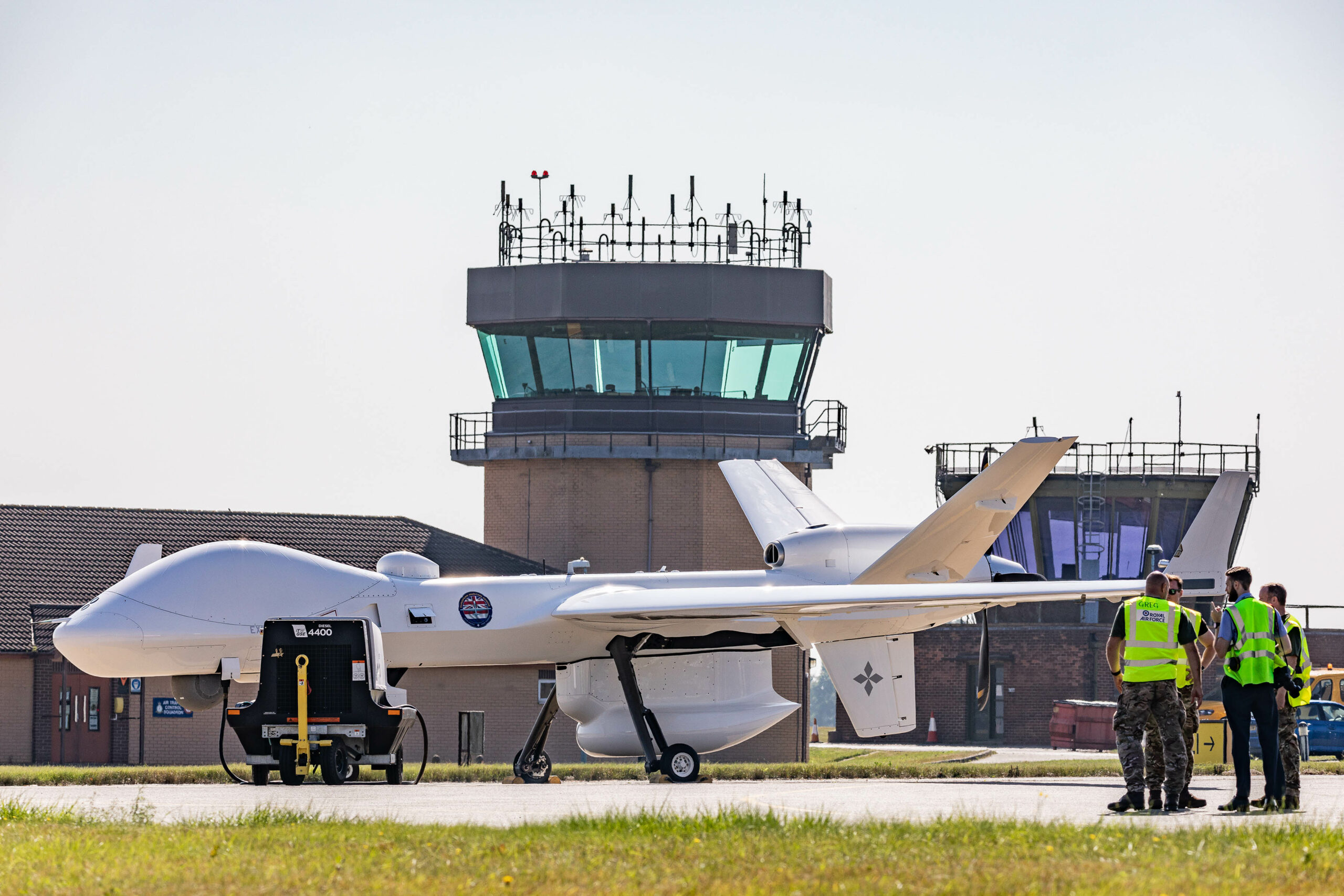On 1 May 2023 the UK Royal Air Force (RAF) began training the first cohort of pilots, sensor operators, and mission intelligence co-ordinators that will operate the RAF’s fleet of Protector RG1 unmanned aerial vehicles (UAVs), General Atomics Aeronautical Systems Inc (GA-ASI) announced on 4 May.
The Protector is a derivative of the GA-ASI MQ-9B SkyGuardian that will be deployed by the RAF for armed intelligence, surveillance, targeting and reconnaissance (ISTAR) operations.
The training is taking place at the GA-ASI-owned and -operated Flight Test & Training Center (FTTC) in Grand Forks, North Dakota.
At the FTTC GA-ASI is training the RAF’s first four Protector operational conversion units (OCUs), each comprising eight crews, including pilots, sensor operators (SOs), and mission intelligence co-ordinators (MICs). Once their training is complete, the crews will operate the Protector within the RAF’s 31, 54 and 56 Squadrons. Training for the pilots and SOs is scheduled to run for 12 weeks, while the MICs will be trained for six weeks.
The scope of the training, which includes both simulation and live flying of the UAV, is focused on the foundational skills required to operate the Protector and its equipment, including its multi-spectral targeting system, synthetic aperture radar, mission intelligence station, and system for tasking and real-time exploitation (STARE). Training involves building solid foundations for both normal and emergency operations in intelligence, surveillance, and reconnaissance (ISR) systems, instrument flying, and automatic take-off and landing.

“The training services performed at our Grand Forks center for the RAF represent an important benchmark for future MQ-9B training for other partners,” GA-ASI President David R Alexander was quoted as saying in a company press release.
The UK Ministry of Defence (MoD) initially ordered three Protectors in July 2020 and then exercised an option to buy 13 more Protectors in July 2021.
A pre-production example performed demonstration operations out of the type’s future home base, RAF Waddington, in August and September 2021.
The RAF intends to achieve an initial operational capability with the Protector RG1 in 2024.
Peter Felstead



![COCO air refuelling: Planting the seed of resilience AAR demands precision flying, which demands a robust training infrastructure; dedicated tankers for training are thus essential within this ecosystem. [Luca Chadwick]](https://euro-sd.com/wp-content/uploads/2025/11/1-Kopie-218x150.jpg)
![Tactical ISR solutions The US Army’s Terrestrial Layer System – Brigade Combat Team (TLS-BCT) mounted on a Stryker 8×8 vehicle. This system is designed to support troops in multi-domain operations. [US Army]](https://euro-sd.com/wp-content/uploads/2025/09/Terrestrial-Layer-System-Kopie-218x150.jpg)

![Pilots for soldiers A US Soldier assigned to 2nd Brigade Combat Team, 101st Airborne Division operates the Kraken during exercise Spectrum Blitz 25 at the Hohenfels Training Area, Germany, on 11 April 2025. [US Army/Sgt Collin Mackall]](https://euro-sd.com/wp-content/uploads/2025/09/Spectrum-Blitz-25-US-ArmySgt-Collin-Mackall-Kopie-218x150.jpg)

![MALE and HALE drone developments: Evolving existing systems and introducing new aircraft An MQ-9B SkyGuardian flying above the UK during the RAF100 event. The UAV is known as the Protector RG Mk 1 in UK service. [GA-ASI]](https://euro-sd.com/wp-content/uploads/2025/06/SkyGuardian_GA-ASI-2-218x150.jpg)
![Air-to-ground precision munitions: A market overview A SPEAR 3 test missile strikes its target during the first live fire test on 17 November 2024. [Crown Copyright 2024]](https://euro-sd.com/wp-content/uploads/2025/06/SPEAR_mini-cruise_missile_first_guided_firing__MBDA_2-Kopie-218x150.jpg)

